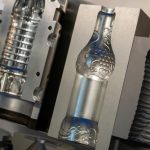What Is The Difference Between Overmolding And Insert Molding?
January 30, 2024 10:10 pm Leave your thoughts
1. Definition and Process
Overmolding is a process in which a single part is created by applying multiple layers of material. It involves molding a primary material, such as plastic, over a pre-formed substrate. The primary material bonds with the substrate, creating a strong and integrated final product. On the other hand, insert molding involves placing a pre-formed component, usually made of metal or another material, into a mold cavity. The plastic material is then injected into the mold, encapsulating the insert and creating a finished product.
2. Material Considerations
In overmolding, the primary material used is typically a thermoplastic, such as polypropylene or thermoplastic elastomer (TPE). This allows for easy bonding between the primary material and the substrate. In insert molding, the choice of materials is wider, as it can involve combining different types of plastics, metals, or even electronic components. The key consideration in insert molding is the compatibility and bonding between the insert and the plastic material.
3. Design Flexibility
Overmolding offers more design flexibility, as it allows for the creation of complex shapes and soft-touch surfaces. Multiple colors and textures can be incorporated into the overmolded part, providing aesthetic appeal and enhancing functionality. Insert molding, on the other hand, provides greater design flexibility by allowing for the incorporation of different materials into a single part. This is particularly useful when combining the strengths of metal inserts with the versatility of plastic.
4. Production Efficiencies
Overmolding generally requires specialized molds that can handle the multiple layers of material. The process can be more time-consuming and labor-intensive, as the substrate needs to be carefully positioned and held in place during the molding process. Insert molding, on the other hand, can be more efficient, as pre-formed inserts are easily placed into the mold cavity and securely held in position. This reduces the complexity of the mold design and speeds up the production process.
5. Product Strength and Durability
Overmolding provides enhanced product strength and durability, as the bond between the primary material and the substrate creates a unified and robust final product. This makes overmolding suitable for applications that require excellent grip, impact resistance, or electrical insulation properties. Insert molding, on the other hand, allows for the incorporation of metal inserts, which can provide superior strength and rigidity. This makes insert molded parts suitable for applications where high strength-to-weight ratios or heat dissipation capabilities are required.
6. Application Examples
Overmolding is commonly used in automotive applications, such as creating soft-touch surfaces on steering wheels, grip handles, and gear shifts. It is also widely used in the medical industry for creating ergonomic and comfortable handles for surgical instruments. Insert molding is frequently used in the electronics industry to embed connectors, sensors, or circuitry into plastic housings. It is also utilized in the appliance industry to combine metal inserts with plastic components, such as handles or knobs.
Summary
While overmolding and insert molding share similarities, they differ in terms of process, material considerations, design flexibility, production efficiencies, product strength, and applications. Both processes offer unique advantages and are suited for specific manufacturing needs. Understanding the differences between overmolding and insert molding can help manufacturers choose the most appropriate process for their products, ensuring optimal performance, aesthetics, and functionality.
Need a Plastic Fabrication Company in Orem, UT?
Categorised in: Injection Molding
This post was written by admin
